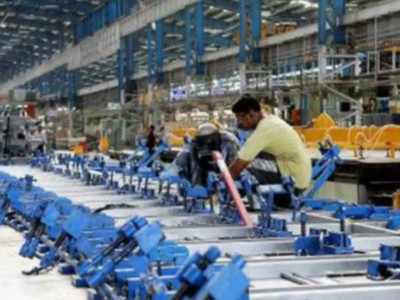
NEW DELHI/ MUMBAI: The rampaging second wave of the Covid pandemic has dented the manufacturing sector, with some industries facing a labour shortage. But a majority of them are adapting to the new situation by ensuring that existing workers are looked after and the production cycle does not get affected significantly.
Most industries and experts agree that the impact on labour mobility is less severe in the second wave compared to the first one when everyone was caught unawares.
“This time it’s different because the lockdown is not pan-India and people haven’t panicked as much. They also know that now the virus is spread across the country. It’s there in the villages and small towns as well. Last year, all the workers who had migrated back to their homes lost out on livelihoods. This year, they are staying back,” said CIEL HR Services CEO Aditya Mishra. “In real estate, however, while commercial work is going on, residential projects are on hold due to subdued consumer sentiment and this is also where there is a labour issue,” said Mishra.
Data also shows that the manufacturing sector is holding up despite the localised lockdowns. The largely tracked PMI manufacturing survey showed it was 55.5 in April — largely unchanged from the previous month although orders and production rose at their slowest pace in eight months. Economists and agencies have shaved a few percentage points off their optimistic GDP growth estimates made earlier. But the country is still projected to grow in double digits with the localised lockdowns having a muted impact so far.
Experts said that, compared to the first wave, the interstate mobility of labour has not led to any major crisis-like situation currently. “Most of the internal migrants stayed back in the states of destination due to their experience during the long national lockdown in the first wave. In any case, we have only state-wise lockdowns now compared to the national lockdown last year,” said Irudaya Rajan, chairman of the Kerala-based International Institute of Migration and Development (IIMAD).
The March 2020 lockdown was dominated by the migrant crisis, which prompted the government to unveil measures to ensure free food and other assistance. The focus of the authorities in the second wave has been on saving lives and meeting the huge challenge to the health sector posed by the coronavirus. Companies too are rolling out vaccination drives and making sure their workforce are comfortable to keep the factories running, and are adapting to new realities.
“Last year was a different situation. There was a national lockdown, fear and panic due to a scenario that humanity had not experienced ever. As of now, there is no such problem. We are taking care of the workers and we have also had a vaccination drive, systems & processes for Covid management, etc, and full salaries are ensured. Such measures are reassuring for the workers as well,” said an RPG Group spokesperson.
But the MD of ArcelorMittal/Nippon Steel India, Dilip Oommen, admitted that the company was facing a shortage of labour due to migration of workers. “However, our facilities are running at 100% capacity,” he said. Automobile giants such as Hero and Maruti have shut down production at some of their units for now.
There are other sectors that are grappling with labour shortages. “There’s a shortage of workers in logistics (dispatch & delivery), medical professionals and in diagnostics. There’s also a supply constraint for tech talent (AI, data engineers, cyber security). There’s, however, no unusual shortage of workers at factories. We see normal hiring taking place in factories. Since there’s accommodation at some manufacturing sites, workers have adapted to the situation,” said Randstad India head (strategic account management) Sanjay Shetty.
B Thiagarajan, MD of leading cooling products maker Blue Star, said migration of labour has not been a major issue as only 20% of workers have gone away. “In any case, we are restricting the number of people at factories as well as at project sites, in accordance with safety protocols. Production shortfall is also not an issue as enough inventory exists and will be made available in June/July after normalcy is restored,” Thiagarajan claimed.
Some experts say manufacturing may be witnessing addition of new capacities as demand for health products grows. “With regards to the manufacturing sector, the second wave did not impact it as much compared to the first wave. In addition, the tremendous demand and marketing of medical and health-related products led to creation of additional jobs and investment in the short run,” said IIMAD’s Rajan.
FacebookTwitterLinkedinEMail






















